|
|
Scene...
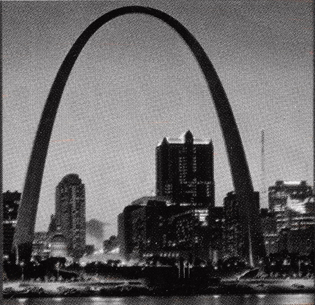
ST.
LOUIS
City
Structure: St.
Louis actually consists of two cities, divided by the Mississippi
river. Two bridges separate E. St. Louis from St. Louis City. Both
cities are industrialized and heavily polluted, the river serving
as a docking area for barge transport. There are about 355,000 residents
in the City of St. Louis and the St. Louis Metropolitan area has
a population of over 2.5 million
East St. Louis is an
area of urban blight, city in financial distress, cops, and fire
departments virtually nonexistent. This
is Sabbat and Anarch terrritory. St. Louis City, urban growth, nice
neighborhoods, bars on the Landing, entertainment complexes, theatres,
restaurants, and sports arena. Organization and History (1979-1999)
Twenty years ago the resident Kindred disappeared. Many rumors float
around as to the cause; a Camarilla purge of non-loyal kindred,
Sabbat War Parties, the beginings of Gehenna, or an unknown elder
sleeping below the city rising up to wreak havok and vengeance upon
the city. Survivors of the era either won't tell or don't know the
details of what really happened. Since then, small bands of Kindred
have entered the city, gravitating toward either the east or the
west side. Recently a number of kindred groups have sent emissaries
into the city to determine the viability of creating a base there.
The absence of any structure would seem to make it an untapped resource.
There are, however, some problems: obviously the Kindred that have
lived there were unsuccessful with establishing a base, for reasons
unknown.
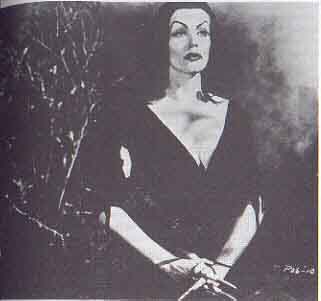
(1999-2000)
Many kindred spilled
into the city, each with express goals to establish a claim and
domain there. Many have never been seen again. The Camarilla established
a small hold and presence within the main city. A Council was formed,
a Prince appointed, and steps were taken to remove the Sabbat and
Anarch threats from the city. The east side of the River, E. St.
Louis meanwhile became the domain of the Sabbat, who's goals were
to spread out their influence and remove the presence of their own
enemies. Fierce fighting between the sects ensued. Neither side
was willing to give an inch, even the Independents were not immune
to the secret war being played out between the city's resident sects.
Though this war did not escape the attention of certain mortal groups,
the bloodshed and the circumstances enough to send the red flags
up to other Watcher groups, the city now has become more dangerous.
Only the hardiest, or foolheartiness of Kindred dare to try to stake
a claim in the area.
See
Map
ST.
LOUIS...
St Louis was founded in 1764 as a fur trading post by Pierre Laclede,
recipient of a land grant from the King of France. The City gained
fame in 1803 as the jumping-off point for the Louisiana Purchase
Expedition of Meriweather Lewis and William Clark. Throughout the
19th Century, St. Louis became an important center of commerce and
trade, attracting thousands of immigrants eager to find a new life
on the edge of the frontier.
The City was incorporated in 1823 and its current boundaries were
established in 1876, when voters approved separation from St Louis
County and establishment of a Home Rule Charter. By the 1890s, St.
Louis was the nation's fourth largest city.
One of the City's greatest moments came in 1904, when it hosted
a World's Fair, the Louisiana Purchase Exposition. More than 20
million people are estimated to have visited the fair during its
seven-month run. Throughout the 20th Century, continued private
and public development activity has resulted in St. Louis becoming
a major regional, national and international center for banking,
manufacturing, health care, and brewing.
St. Louis is located on 60 square miles just south of the "Meeting
of the Rivers," where the Missouri and Illinois Rivers join
the Mississippi River. The City is at the center of a 12 county,
7,000 square mile metropolitan area that includes approximately
2.5 million people. The area is a relatively short distance by airplane,
automobile from such other cities as Kansas City (250 miles), Chicago
(300 miles) Indianapolis (250 miles) and Memphis (300 miles).
While most of the City's terrain is marked is generally flat with
gently rising low hills, the riverfront area is subject to annual
flooding along the Mississippi River. The downtown business district
is protected by a levee and a flood wall that has never been topped.
The City itself, St. Louis, is home for approximately 396,000 (1990
Census) individuals, 51% of whom are white, 48% are black and 1%
are other races. Many parts of the City reflect their immigrant
backgrounds, with Italian, German and Irish neighborhoods still
prominent. A growing Asian population has recently begun to settle
in the City's southside along South Grand Avenue. St. Louis is characterized
by its distinctive neighborhoods and the diverse and rich architectural
styles of its housing. Devided into 79 neighborhoods, the City also
boasts 104 parks, totaling 3,000 acres, the largest of which is
the 1,300-acre Forest Park on the western edge of the City. There
are also 10 recreation centers located throughout the City.
Other Attractions
| Laclede's Landing | Gateway
Arch | Central West End | Forest
Park | Art Museum |
| Zoo | Union Station |
Lambert Airport | Courthouse
| Kiel Center | TWA Dome
|
| Anheuser Busch Brewery |
Laclede's
Landing (Riverfront)
In 1764, a French fur trapper named Pierre LaClede established Saint
Louis as trading post on the west banks of the Mississippi River.
Business was good from the beginning. Soon the village became the
center of commerce with furs as the main source of exchange for
goods.
Today, Laclede's Landing, a nine - block industrial area that once
housed companies producing coffee, leather goods, mattresses, tobacco,
whiskey, candy and machinery for the barges, features some of the
most unique restaurants and sidewalk cafes in Saint Louis. The historic
area is located north of the Gateway Arch. Visitors to Laclede's
Landing can experience the charm of cobblestone streets and century
old brick and cast iron facade buildings as they browse through
specialty gift shops.
During the day, the historical district is also home to people who
work at the many offices located on the edge of the Mississippi
River. At night, horse drawn carriages and live music add to the
atmosphere of one of the premier entertainment areas in Saint Louis.
Nearby, sightseeing excursions and gaming boats offer additional
choices for entertainment.
Directions: Laclede's Landing is located between I-70 and the Mississippi
River and tucked comfortably between the landmark Eades Bridge and
the Dr. Martin Luther King Bridge just north of the Gateway Arch
and east of the Trans World Dome.
back
to top
Gateway Arch
(Riverfront)
The Jefferson National Expansion Memorial Park was established on
the banks of the Mississippi River, on December 21, 1935, to commemorate
the westward growth of the United States between 1803 and 1890.
Cost for the $30 million national monument was shared by the federal
government and the City of St. Louis. The park features the Gateway
Arch, designed by architect Eero Saarinen who won the design competition
in 1947. The stainless steel structure rises 630 feet high from
a 60-foot foundation and spans 630 feet at ground level. Its classic
weighted catenary curve sways 1/2" - 1" in 20 mph wind.
Construction on the nation's tallest memorial began in 1961 with
the "topping out" in 1965 and dedication in 1966.
The floor plan of the Underground Visitor Center follows a circular
pattern with galleries depicting a 100-year span of westward expansion
and the Tucker Theatre. Additional attractions include two passenger
trams to the observation room at the top and the Museum of Westward
Expansion. Cost to ride the trams to the top is $6 adults and $2.50
for children ages 3 to 12.
Films:
Monument to the Dream - A documentary film by Charles Guggenheim
on the construction of the Arch is shown daily in the Tucker Theatre.
The Great American West comes to life on the Arch's Odyssey Theatre's
four story high screen featuring a 70 mm projection system and THX
Sound. Show times are daily, beginning at 10 am through 5 pm. Tickets
are available at the Arch Ticket Center.
back
to top
Central West End (Westside
of downtown)
One of St. Louis' featured business districts hosts an assortment
of fine restaurants, multi-cultural galleries, specialty shops on
Euclid Avenue, Maryland Plaza and McPherson Ave.
The Central West End is an eclectic, cosmopolitan showplace of St.
Louis. Located in the central corridor of the City, just north of
Forest Park, the area is a popular gathering place. A fine selection
of restaurants and sidewalk cafes are nestled in with notable art
galleries, antique shops, specialty shops, boutiques and bookstores.
St. Louis artist Wiktor Szostalo oversees the installation of "The
Angel of Harmony", a stainless steel sculpture of an African-American
angel.
The area was created during the period of the City's westward expansion
in the late 19th century and the building boom of the 1904 World's
Fair. During this time, private streets with beautiful, luxurious
residences were built. Today, the stately homes on tree-lined streets
maintain the prestigous neighborhood.
The Cathedral Basilica of Saint Louis, located at 4431 Lindell Blvd.,
contains the world's largest collection of mosiac art, covering
83,000 square feet. The cathedral, designated a basilica in 1997,
was built between 1907 and 1909. The interior mosaics took a father
and son team nearly 80 years to create using than 41 million pieces
of tile in over 7,000 colors. A Mosaic Museum, located in the lower
level of the cathedral, traces the contruction and installation
of tiles. The glittering green dome is a landmark feature of the
Central West End.
The Angel of Harmony, a 1,100-pound stainless steel sculpture of
an African-American angel, commissioned by the Archdiocese of St.
Louis, was recently installed outside the cathedral. The sculpture,
with massive uplifted wings comprised of copper and brass wind chimes,
is the gift of Adelaide Schlafly in memory of her late husband,
Daniel. The angel's arms are outstretched over three children of
different ethnic and racial backgrounds playing a "Hymn of
Peace" on diverse instruments. Quotations from the New Testament,
Pope John Paul II, Dr. Martin Luther King, Jr., and a dedication
to Mr. Schlafly are inscribed on the base.
A life-size bronze sculpture of Pope John Paul II, by artist Rudy
Torrini, sits on a red Missouri granite base outside the cathedral.
The sculpture was commissioned by the Archdiocese of St. Louis to
commemorate the Papal Visit, January 1999. For more information,
call (314) 458-4343.
The Chase Park Plaza at Kingshighway between Lindell and Maryland
Plaza has been rennovated for upscale private residences. The complex
features restaurants, a movie theatre and banquet facilities. The
area is accessible by MetroLink. Visitors can transfer to the Forest
Park Shuttle Bug for a tour of Forest Park's recreational and cultural
attractions.
back
to top
Saint
Louis Forest Park (West of downtown)
In 1876, Forest Park was created from 1,371 acres of land west of
downtown St. Louis. By the 1890s, the public park was widely used
for recreation with bicycle paths, baseball diamonds and lawn tennis
courts. An expanded lake provided parkgoers with an opportunity
for boating in the summer and skating in the winter. Funds were
raised to develop the St. Louis Zoo by the Forest Park Zoological
Association.
The western half of the metropolitan park was used as the site for
the Louisiana Purchase Exposition in 1904. Today, the Saint Louis
Art Museum occupies one of the few remaining structures built for
the Fair. The Jefferson Memorial Building houses the History Museum
and the Missouri Historical Society. The building was the first
memorial built to honor Thomas Jefferson and was funded with proceeds
from the 1904 Fair.
A natural amphitheater near Art Hill was developed as The Muny in
1917 with proceeds from a theatrical production called the Pageant
and Masque which was performed on a stage built over part of the
Grand Basin.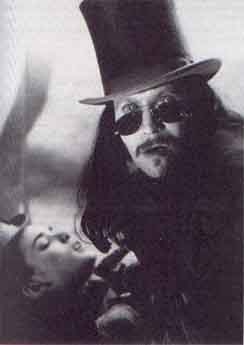
In 1936, an Art Deco-style Conservatory opened in Forest Park. The
Jewel Box is surrounded by rose gardens, lily ponds, statuary and
monuments and houses seasonal displays.
The site of a razed Mounted Police Station became space for the
McDonnell Planetarium which was completed in 1963. In 1984, the
city sold the Planetarium to the Museum of Science and Natural History.
The building, renamed the St. Louis Science Center, is connected
by a highway overpass and tunnel to its new headquarters, south
of Forest Park.
Private donors to Forest
Park Forever paid for the $1.1 million restoration of the World's
Fair Pavilion. The current renovation is the first of three scheduled
phases of Forest Park Master Plan. Forest Park is used by more than
10 million visitors a year. Forest Park Forever was founded in 1986
to work in partnership with the Department of Parks, Recreation
& Forestry to rehabilitate and maintain the Forest Park as the
"Crown Jewel" of the metropolitan area.
back
to top
St
Louis Art Museum
(within Forest Park)
The Saint Louis Art Museum is one of the leading art museums with
more than 100 galleries. The building was designed by famed architect
Cass Gilbert as the Palace of Fine Arts for the 1904 World's Fair
in Forest Park. Standing atop Art Hill, it is the "crown"
jewel" of the 1,370-acre park. The Grand Basin is the lake
at the foot of Art Hill and served as the focal point of the 1904
World's Fair. An exhibit of the 1904 World's Fair can be seen at
the Missouri Historical Society, located in the Jefferson Memorial
Building in Forest Park.
The Museum's collections feature more than 30,000 art treasures
from ancient times to the present. Highlights include art of the
Renaissance, masterpieces of Impressionism, American European Art,
Asian art, Period Rooms, the Egyptian mummy, and world-renowned
collections of pre-Columbian and German Expressionist art.
The Museum is open Tuesday, 1:30 - 8:30 p.m.; Wednesday - Sunday,
10:00 a.m. - 5:00 p.m.; Closed Mondays, Thanksgiving, Christmas
and New Year's Day. The Museum and its galleries are accessible
to persons with disabilities. Admission to the Museum and permanent
collection is always free. However, special programs have fees or
require pre-registration.
back
to top
St Louis Zoo
(within Forest Park)
The St. Louis Zoo, a state-of-the-art biopark, is home to more than
3,000 animals and features Jungle of the Apes and Big Cat Country.
Additional attractions include the Emerson Electric Children's Zoo,
The Living World educational center, sea lion shows and bird house.
The World's Fair Flight Cage at the Zoo and the Saint Louis Art
Museum, located north east of the Zoo, are the two structures remaining
in Forest Park that were built for the 1904 World's Fair. An exhibit
of the 1904 World's Fair can be seen at the Missouri Historical
Society, located in the Jefferson Memorial Building in Forest Park.
A miniature Zooline Railroad weaves through tunnels and past favorite
animals exhibits on a 1 1/2 mile trip around the Zoo. The four trains
on the Zooline operate with an engineer and conductor, accompanied
by a fireman seated alongside the engineer. Passengers can purchase
a ticket at one of four stations, leave the train to visit animal
exhibits and then re-board.
This year, the Zooline Railroad will be the best way for visitors
to get a good look a the River's Edge and Raja's new home - Dana
Brown Lords of the Forest - under construction. The Zoo's four adult
females and Raja will not be visible to the public until they move
into their new home when Phase I of River's Edge opens in summer
of 1999. The Zoo is also building the Monsanto Insectarium which
will open in 2000.
The Zoo is open daily from 9 a.m. - 5 p.m. year-round except December
25 and January 1. From Memorial Day to Labor Day, the Zoo is open
on Tuesdays until 8 p.m. General admission to the Zoo is FREE. Some
events and special programs may have an admission cost.
back
to top
Union Station (Western
Downtown)
Saint Louis Union Station is a National Historic Landmark with the
expansive 11.5 acre trainshed features a hotel, a unique marketplace
of shops, assortment of fine restaurants and cafes, live entertainment
and a lake with boats.
A massive, Romanesque-style building, designed by architect Theodore
Link in 1894, was once the largest and busiest railroad terminal
in the world. In 1976, the Saint Louis Union Station was designated
a National Historic Landmark. After an extensive $150 million restoration,
the facility reopened in 1985 with a hotel, shops, restaurants and
a lake ... all under one roof.
Today, the Grand Hall features a barrel-vaulted ceiling of unsurpassed
gilt work, stained glass over the entrance, scale models of trains
and statues. Visitors can discover the Station's past and present
with a self-guided walking tour through one of the nation's most
significant rail stations and restoration projects. Additional activies
are featured throughout the year including historic and refurbished
train displays, children's entertainment, sports events and exhibits.
Across from Union Station is Aloe Plaza and the magnificent Carl
Milles' Fountain with elaborate bronze sculptural pieces representing
the meeting of the rivers.
Directions: Union Station is located at 1820 Market Street, between
18th and 20th Streets. The historic building is north of I-64 and
just four blocks west of Kiel Center. The landmark is within walking
distance of Busch Stadium and the Gateway Arch.
back
to top
Lambert International Airport
(Northwest area of the city)
St. Louis International Airport has introduced new procedures for
ground transportation to make it easier for passengers leaving and
entering the Main Terminal. Changes affect rental cars, taxis, shuttle
services, and a curbside pick-up area for passengers.
All licensed cabs will pick up passengers from the yellow level
of the hourly parking garage near Exit MT14, which is next to the
baggage claim area. A customer who summons taxi service in advance
should proceed to the brown level of the hourly parking garage by
using the escalator or elevator near Exit MT14.
Hotel shuttle buses will now stop at Exit MT18 near the Airport
Police Station. Lambert provides free shuttle service to the East
Terminal and bus port from Exit MT12 and to Lambert's intermediate
and long-term parking lots from Exit MT11. Private, off-Airport
parking vendors will provide shuttle service to their facilities
from the center island of Baggage Claim Drive near Exit MT11.
Rental car companies will continue to operate from counters near
the baggage claim area but will provide shuttle bus service to their
respective pick-up facilities where customers will also return cars.
Rental cars shall no longer be returned to the Main Terminal.
A five-minute, curbside pick-up area for passengers will be located
at the western end of Baggage Claim Drive at Exit MT17. Driver need
to remember that unattended vehicles are subject to being ticketed
or towed at the owner's expense.
For more information, call the Lambert Information Hotline - 314-851-0987
or visit their web site at www.lambert-stlouis.com
back
to top
Old Federal Courthouse
(downtown)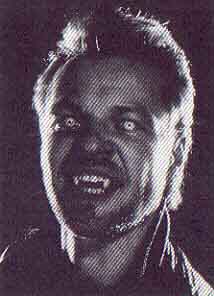
In 1826, construction of the original Federal Style Courthouse began
on land donated for use as a public square by Auguste Chouteau and
J.B.C. Lucas. Construction on the existing Greek Revival style Courthouse
began in 1839 and continued through several transitions until 1862.
The courthouse was the scene of many rallies, speeches and several
important trials, including the suit by Dred Scott for freedom from
slavery and Suffragist Virginia Louisa Minor for the right to vote.
In 1940, the city of St. Louis deeded the Old Courthouse to the
Federal Government.Today, this nineteenth-century courthouse features
restored courtrooms, a beautifully-decorated dome, Dioramas, the
"Gateway To The West" film and galleries depicting the
history of St. Louis. The Old Courthouse is open to the public from
8 a.m. to 4:30 p.m., seven days a week. Admission is free.
back
to top
Kiel
Center (Western downtown)
Saint Louis is a sports town. The St. Louis Kiel Center, a contemporary
building of glass and steel in the downtown area, is the home of
St. Louis Blues NHL hockey team, the St. Louis Ambush indoor soccer
club and the Saint Louis University Billikens basketball. The facility
hosts over 200 entertainment and professional sports events every
year.
Triangle Park, across from the Kiel Center, features dramatic sculptured
steel pieces standing at the top of the tree-lined stairs leading
from the MetroLink station.
A multimodal hub for St. Louisans and visitors is also taking shape
across from the Kiel Center. The centerpiece of the new Transportation
Center is a new 20,000 sq. ft. terminal that will be elevated over
the track. Stairs and elevators will connect the terminal to the
platforms below for boarding the trains. An enclosed pedestrian
concourse will run from the terminal to the Kiel Center and MetroLink
Station.
back
to top
America's
Center, TWA Dome (downtown)
The America's Center, a multi-purpose facility, features 502,000
sq. ft. of exhibit space and includes a three-level Lecture Hall
with 1,411 seats, a 28,000 sq. ft. Grand Ballroom, an Executive
Conference Center, and 162,313 sq. ft. of exhibit space in the adjacent
Trans World Dome. The 70,000 seat domed stadium is home to the NFL
St. Louis Rams.
The business district of downtown Saint Louis continues to grow
and reshape its skyline with dramatic new structures of marble,
granite and glass. At the turn of the century, Saint Louis was known
as the small industrial capital of the world. Washington Avenue,
which passes in front of the America's Center, was once a prosperous
canyon of architecturally beautiful brick buildings housing shoe,
clothes and fashion manufacturers.
Directions: America's Center is located at 701 Convention Plaza,
just north of downtown and east of I-70. The Trans World Dome is
adjacent to the Center and faces Broadway. The facility is west
of historic Laclede's Landing and the landmark Eades Bridge. The
Center is approximately six blocks north of Busch Stadium, home
of St. Louis Cardinals baseball.
back
to top
Anheuser-Busch Brewery
(South of downtown)
Saint Louis - Tours of Anheuser-Busch headquarters take visitors
on a memorable journey through part of America's brewing heritage.
Located at I-55 and Arsenal Street, the brewery is also home to
one of three traveling Budweiser Clydesdales teams. The century-old
stables, featuring stain glass windows and a massive chandelier
house an eight-horse hitch and a beer wagon weighing four tons.
Visitors can tour the historic Brew House and see the copper kettles,
wall murals, ornate wrought-iron railings and hop vine chandeliers.
A multimedia presentation highlights the brewing process. The tour
continues through the Bevo Packaging Plant, where high-speed bottling
and canning lines can be viewed. Free tours are available year round.
Call 314-577-2626 for additional information.
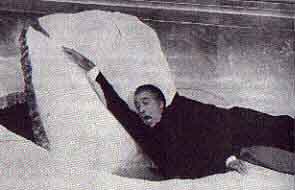
back
to top
|

